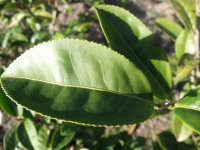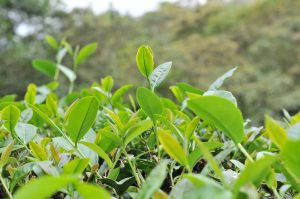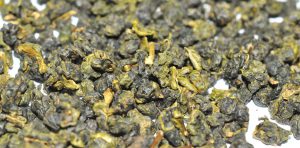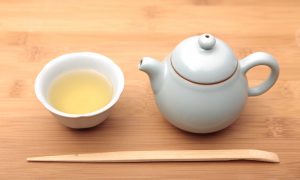Today Jessica invited me to join the group discussion on FB about Milky Oolong based on the question from Luci:
“Milky oolong has been quite popular last few years. Many retailers and suppliers claim it’s steamed with milk, but I’m curious is it really steamed with milk or is it just aroma? Is there really an oolong tea that is steamed with milk?”
When there is a question, it opens a learning door and gives us a chance to share the right information and knowledge.

Flat round shape
Jin Xuan is a tea tree cultivar originated from Taiwan that was cultivated by the TRES (Tea Research and Extension Station) in 1981, the code is TTES#12, also known as #27 in Taiwan. It was cultivated based on “Yin Zhe Hong Xing 硬枝紅心” as patrilineal and “Taiwan Agriculture #8” as maternal. The harvest output from Jin Xuan is higher than Qing Xin Da Pang and Qing Xin

Can grow on high altitude upto 1600mt
tea tree cultivars. This tea tree cultivar has very suitable species that it can be grown on higher altitude upto +/- 1600mt.
The literal spelling of Jin is “Golden” and Xuan is also used in a Chinese medicinal herbal, Xuan Cao, it is herbal that said can reduce worries. Based on the first word, Jin, so we can picture the color of Jing Xuan as beautiful yellowish with great clarity in light amber.

Half ball shape in Yellowish Olive Green color
The pure quality Jin Xuan Oolong has somewhat a kind of mother-breast milk creamy note from the cup, in Chinese, we write it as 乳香 (Rou Xiang ), which is different from 奶香 (Nai Xiang, Nai = milk). The one who first translated Jin Xuan based on the mother-breast milk like creamy note to Milky Oolong in English has made a big mistake. It misleads people to think dried leaves from Jin Xuan Oolong should have milky flavor. This misunderstanding gives tea traders a chance to use extra milk aromatic additives with lower quality tea leaves and advertise it as “milky oolong”.
Any dried loose leaves tea has very strong and even irritating aroma, the chance for being a flavored tea with additive aroma is very likely.
Check your The European regulations request correct and clear labelling if any additives being used in tea or blending tea.
Of course, tea suppliers won’t tell their clients the tea was actually flavored tea from the lower quality oolong tea leaves by using the milk aroma. So here it started the fancy story of telling it is steamed with milk. In Europe often consumers buy tea based on the flavor that they smell from the jar or by name; because people purchase tea by following their preference in aroma without knowing how to distinguish the authentic natural flavor from the flavored aroma tea. That’s why so many flavored teas sold in tea shops, not only in Europe, America but also surprisingly in China, Taiwan and Asia. The same tea tree cultivar would have variant flavor and taste because of difference in the Mother Nature growing environment and micro-environmental elements. Not to mention, the age of tea trees and how their manage the tea farm could also influence the quality of flavor and taste.
Another realistic issue we have to understand and accept is consumers have very limited knowledge about tea and are reluctant to pay right price without knowing the value of the pure authentic quality tea.
Jin Xuan Oolong
- Light fermented Oolong. It’s also suitable to produce Bao Zhong and Black Tea.
- Shape : half ball shape
- Color of dried leaves : Yellowish Olive green
- Flavor from dried leaves : Sweet mother-breast milk like creamy, nuts and flora
- Once leaves were warmed up in the teapot or gaiwan, then the natural scent of sweet flora, nuts and creamy notes are starting to flourish.
- Color of the tea liquid: Yellowish light amber
 Brewing Suggestion
Brewing Suggestion
- Tea : Water : 1g : 75ml
- Water temperature : 95-99°C
- Steeping time : 1 min – 45 sec – 1 min.
- Tea ware : Porcelain Gaiwan or small tea pot
- Multiple infusion : 4-6 or more subject to the quality


Leave a Reply
You must be logged in to post a comment.